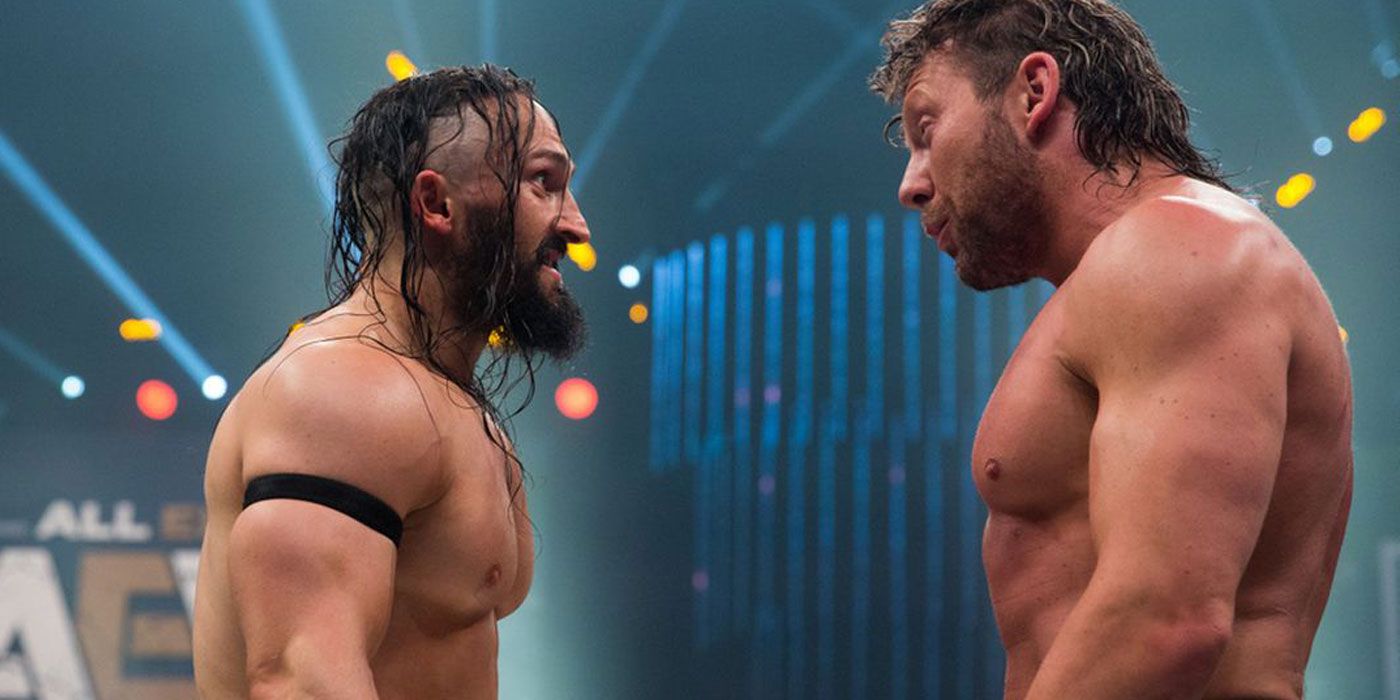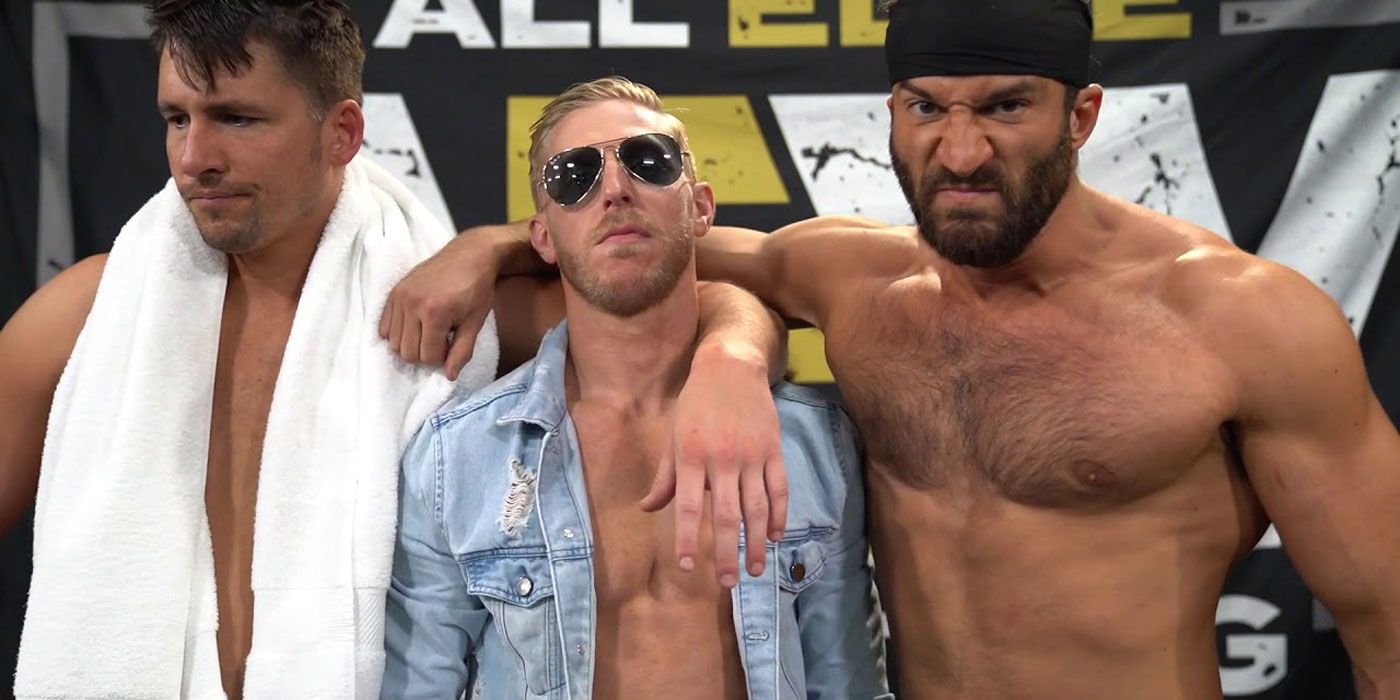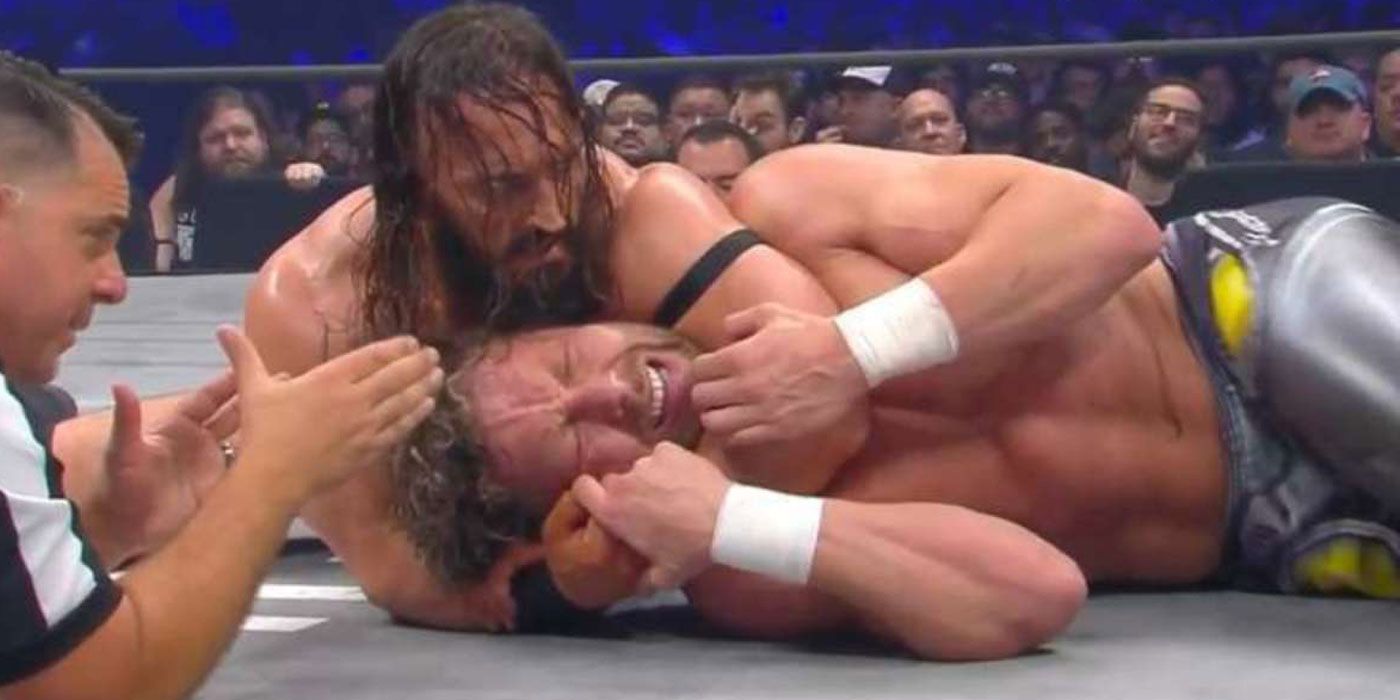On the April Fool's Day edition of AEW Dynamite, Kenny Omega defeated Trent in a banger of a match. Omega was fantastic, as usual. Trent looked great in defeat. So, what made this match one of AEW's rare missteps? The answer lies in its continued blind spot towards one of its most unique in-ring rules: its time limit stipulations. Every AEW match begins with the announcement of a time limit. If neither wrestler scores a victory over the other before that time runs out, the match is considered a draw.
AEW instituted this rule in direct contrast to WWE's way of scheduling matches, which rarely have any time stipulations. A WWE match might go a minute or an hour, but it goes until one wrestler wins or -- as frequently happens -- someone interferes, and the match is called off due to disqualification. Thus, if a match takes place at the end of Raw or Smackdown, fans know there will be a pinfall or a DQ right before the show goes off the air. But in AEW, if a winner doesn't emerge before television time runs out, neither side gets the win. AEW promoted its time limit rule as a way of adding both realism and drama to its matches, but AEW seldom makes use of it.
Despite advertising a time limit at the start of every match, only three matches in AEW history have ended as time limit draws. The first was Cody Rhodes' match against Darby Allin at Fyter Fest in June 2019, which exceeded its 20-minute time limit. The second was on the October 23 episode of Dynamite, when Jon Moxley's match against Pac to close out the show ran out of tv time remaining. The last was Chris Jericho's 10-minute draw against Jungle Boy on the December 18 episode of Dynamite.
That's only three draws in nearly a year and a half of wrestling. AEW's reluctance to make better use of its time limit stipulations is baffling when considered in the light of two of its other major nods towards realism in its matchmaking philosophy: Win-Loss Records and a lack of disqualifications. A big part of AEW's opening pitch was the idea that unlike WWE, AEW would be a wrestling promotion where wins and losses mattered. Unlike WWE, which doesn't officially keep track of a wrestler's wins or losses, AEW promotes its wrestlers based on their Win-Loss record in the ring. It releases updated rankings weekly of the current standings in each division, based upon that week's matches. In WWE, wrestlers can score a big upset victory and disappear off television in the next few weeks, or lose multiple matches in a row and then be given a title shot. In AEW, how many wins you have, and who those wins (or losses) have come against really do matter -- and that's precisely the problem.
When WWE wants to protect both wrestlers in a match from having to look week by taking a loss, it simply finds a way to have the match end in a disqualification, either from interference from outside the ring or from a wrestler attacking his opponent with an unsanctioned object. It's become such a cliche in WWE that it's rare to see a week go by that DOESN'T see at least one disqualification on Raw or Smackdown. As part of its commitment to providing a more realistic wrestling product than WWE's "sports entertainment" brand, AEW promised that it would not feature many DQ finishes, and it hasn't. To date, there's only been a single disqualification in AEW history, and it came this February in Pac's 30 minute Iron Man match against Kenny Omega.
Combine a commitment to making wins and losses matter with a commitment not to have matches end in disqualification, and the result is that AEW has backed itself into a corner creatively. While the top of the card hasn't suffered much from these rules, the midcard has increasingly struggled to build up members who are periodically forced to eat losses against bigger stars to protect the stars' records. Omega's match against Trent was a perfect example of this. A win over Trent doesn't do anything for Omega, while a loss for Trent pushes him further down the card and slows the momentum of the burgeoning Best Friends/Orange Cassidy team as a whole. AEW clearly wanted Trent to look strong without actually going over on Omega. The situation couldn't have possibly been more perfectly suited to ending in a time limit draw, which would make both men look good without affecting their records. So why on earth did AEW have Trent almost make it to the time limit, only to let Omega go over with a pointless victory with just under a minute remaining?
In the grander scheme of things, this one match ultimately doesn't matter too much. Trent and the Best Friends should continue to do well in the tag division, and Omega's likely already forgotten the victory. But given AEW's ongoing struggles to develop the upper section of its midcard, the match served as a microcosm of AEW's failure to take advantage of one of the best storytelling devices it has to help protect its wrestlers. For all the things that AEW does so well, its failure to make better use out of its time limit stipulations is an error it should be looking to rectify as it moves forward.



